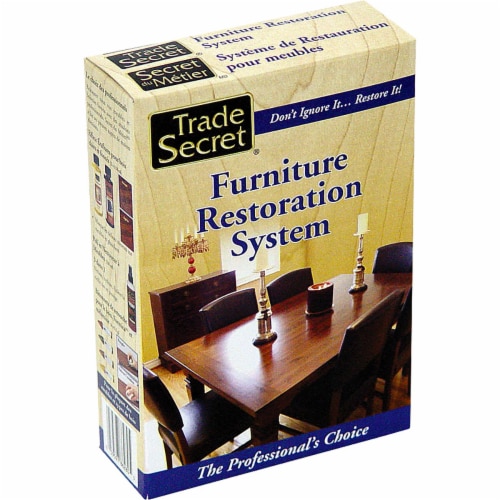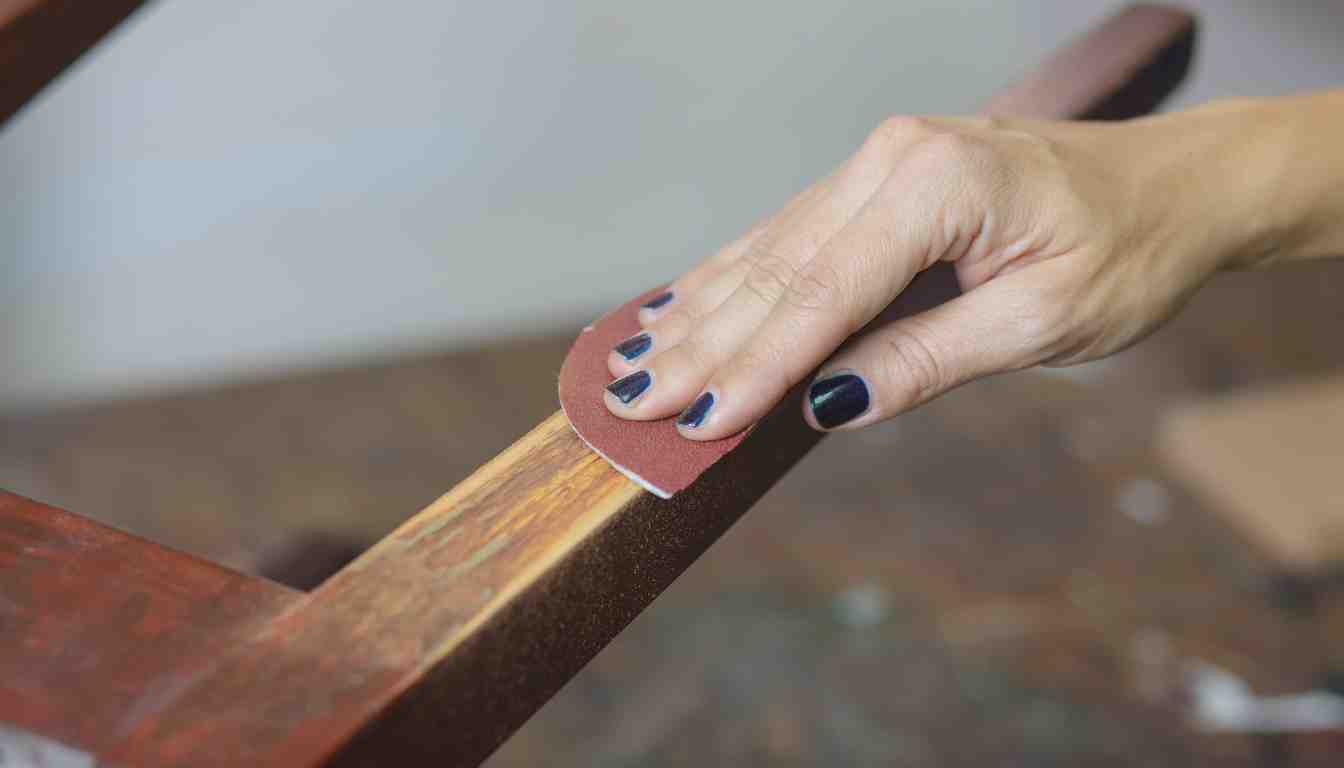When it comes to wood furniture restoration, hiring a professional restorer is vital. They have the expertise and tools to revive and renew your furniture, ensuring it looks brand new.
Wood furniture restorers specialize in repairing, refinishing, and preserving wooden furniture to extend its lifespan and maintain its beauty. Whether it’s an antique piece or modern furniture, a skilled restorer can bring out the natural beauty of the wood while addressing any damage or wear.
By utilizing their knowledge of wood types, finishes, and restoration techniques, they can breathe new life into your treasured pieces. With their attention to detail and commitment to quality, a wood furniture restorer can elevate the aesthetic appeal and functionality of your furniture, ensuring it remains a cherished part of your home for years to come.
Understanding Wood Furniture Restoration
Wood furniture restoration is a valuable skill that can transform old, worn-out pieces into beautiful treasures. With the expertise of a wood furniture restorer, you can understand the intricate process of restoring wood furniture to its former glory.
What Is Wood Furniture Restoration?
Wood furniture restoration involves revitalizing and renewing old, worn, or damaged wooden furniture to bring it back to its original beauty and functionality.
Why Restore Wood Furniture?
Restoring wood furniture allows for the preservation of high-quality craftsmanship and tradition, as well as the personal and emotional value attached to the piece.
Common Issues With Wood Furniture
Wood furniture can face various types of damage over time, impacting its beauty and functionality. Understanding the common issues that arise with wood furniture is crucial for effective restoration and maintenance.
Understanding Wood Damage
Wood damage can occur due to factors like moisture, sunlight exposure, scratches, and wear and tear. Identifying the specific type of damage is key to proper restoration.
Identifying Types Of Wood Furniture Damage
1. Discoloration: Stains caused by spills or sunlight exposure.
2. Scratches: Surface marks that affect the appearance of the wood.
3. Water Damage: Swelling or warping due to excess moisture exposure.
4. Cracks: Visible splits or fissures in the wood.
Essential Tools For Wood Furniture Restoration

Credit: www.kroger.com
Step-by-step Wood Furniture Restoration Process
Restoring wood furniture can be a deeply satisfying and rewarding experience. Not only does it breathe new life into worn-out pieces, but it also allows you to showcase your creativity and craftsmanship. In this article, we will guide you through the step-by-step process of wood furniture restoration. From surface preparation to repairing damaged wood and refinishing techniques, you’ll learn everything you need to know to transform your wooden furniture into stunning pieces that will stand the test of time.
Surface Preparation
Before you start any restoration work, it’s essential to prepare the surface of the wood properly. This will ensure that the new finish adheres well and creates a smooth, professional-looking result. Follow these steps for effective surface preparation:
- Start by removing any existing finish or paint from the furniture using a paint stripper or sandpaper.
- Once the old finish has been removed, sand the entire surface of the wood using a medium-grit sandpaper to smooth out any imperfections.
- Clean the surface of the wood with a damp cloth to remove any dust or debris.
- If there are any deep scratches or dents, fill them with wood filler and sand it smooth once it has dried.
Repairing Damaged Wood
Wood furniture often suffers from wear and tear over time, including scratches, dents, and loose joints. Taking the time to repair these damages will enhance the overall look and functionality of your piece. Here are the steps to follow when repairing damaged wood:
- Identify and assess the damages on your furniture, such as scratches, dents, or loose joints.
- For scratches, use a wood filler or a colored wax fill stick that matches the wood’s color to fill in the damaged area.
- If you have dents, use a wet cloth and a hot iron to apply steam to the affected area. This will cause the wood to expand and regain its original shape.
- For loose joints, apply carpenter’s glue to the joint, then clamp the pieces together until the glue dries.
- After the repairs have been made, sand the repaired areas until they are smooth and blend seamlessly with the rest of the furniture.
Refinishing Techniques
Once the surface preparation and repairs are complete, it’s time to refinish the wood and bring out its natural beauty. There are various refinishing techniques you can choose from, depending on the desired look and the condition of the wood. Here are some popular refinishing techniques:
| Technique | Description |
|---|---|
| Staining | Apply wood stain to enhance or change the color of the wood while still allowing the grain to show through. |
| Painting | Give your furniture a new look by applying paint in your desired color. This is a great option if the wood has significant damage or if you want a bold, modern finish. |
| Oil Finishing | Apply wood oil to nourish the wood and give it a natural, matte finish. This technique is perfect for maintaining the natural look of the wood. |
| Clear Coat | Protect the wood and enhance its natural beauty by applying a clear coat finish. This technique is ideal for showcasing the wood’s grain pattern. |
Choose the refinishing technique that suits your style and the condition of the wood, and follow the instructions accordingly. Remember to apply multiple thin coats and allow sufficient drying time between each layer for the best results.
Choosing The Right Wood Furniture Finish
When it comes to bringing new life to your wood furniture, selecting the right finish can make all the difference. From enhancing the natural beauty of the wood to providing protection against daily wear and tear, the choice of finish plays a crucial role in the overall appearance and longevity of your furniture.
Understanding Wood Finishes
- Understanding the various types of wood finishes can help you make an informed decision.
- Finishes can be categorized into two main types: penetrating finishes and surface finishes.
- Penetrating finishes seep into the wood to enhance its natural look, while surface finishes form a protective layer on top.
Selecting The Appropriate Finish For Different Wood Types
- Different wood types may require specific finishes to achieve the best results.
- Hardwoods like oak and mahogany often look stunning with oil-based finishes that bring out their rich tones.
- Softwoods, such as pine or cedar, may benefit from a clear varnish or lacquer to add durability and shine.
- Exotic woods like teak or rosewood typically respond well to natural oils for a luxurious finish.
| Wood Type | Recommended Finish |
|---|---|
| Oak, Mahogany | Oil-based finishes |
| Pine, Cedar | Clear varnish or lacquer |
| Teak, Rosewood | Natural oils |
By selecting the appropriate finish for your wood furniture, you can not only enhance its aesthetic appeal but also ensure its longevity and durability.
Preservation And Maintenance Tips
Preserving and maintaining your wood furniture can help maintain its beauty and functionality for years to come. By following some key preservation and maintenance tips, you can ensure your furniture remains in top condition and retains its value.
Protective Coating Application
Applying a protective coating to your wood furniture is essential in safeguarding it from potential damage due to exposure to elements and everyday use. Consider using a high-quality wood finish product that provides long-lasting protection against moisture, heat, and scratches. Ensure the furniture is clean and dry before applying the protective coating, and follow the manufacturer’s instructions for the best results.
Maintenance Practices For Longevity
Regular maintenance is crucial for extending the lifespan of your wood furniture. Here are some maintenance practices to help you keep your furniture in optimal condition:
- Keep the furniture away from direct sunlight and heat sources to prevent fading and warping.
- Use coasters, placemats, and trivets under objects to prevent scratches, stains, and heat damage.
- Dust the furniture regularly with a soft cloth to prevent the buildup of grime and dirt.
- Periodically clean the furniture with a mild wood cleaner and polish to maintain its luster.
- Inspect the furniture for any signs of wear or damage and address any issues promptly.
Reviving Antique Wood Furniture
Antique wood furniture holds timeless beauty and character, making it a valuable addition to any home. Restoring these pieces requires a delicate touch and an understanding of their historical value. In this section, we will explore the process of reviving antique wood furniture, including recognizing antique value and restoration approaches for these cherished pieces.
Recognizing Antique Value
When identifying antique wood furniture, it’s essential to consider factors such as craftsmanship, age, and provenance. Look for artisanal details, such as hand-carved embellishments, dovetail joints, and fine craftsmanship that represents a particular period in history. Additionally, authentic antique wood furniture often bears signs of wear and use, adding to its allure and provenance.
Restoration Approaches For Antique Pieces
Restoring antique wood furniture requires a nuanced approach to preserve its historical integrity while enhancing its appearance and functionality. This may involve repairing veneer damage, addressing water stains, and revitalizing the wood’s natural luster. Careful consideration should be given to using traditional restoration methods, such as French polishing and hand-crafted repairs, to ensure that the piece retains its authentic charm.

Credit: rainonatinroof.com
Showcasing Your Restored Wood Furniture
Revitalize your space by incorporating beautifully restored wood furniture pieces that add character and charm to your home.
Incorporating Restored Furniture Into Modern Interiors
Create a seamless blend of old and new by mixing restored wood furniture with contemporary decor elements for a unique look.
- Place a refurbished wooden coffee table in a minimalist living room to add warmth and texture.
- Pair vintage wooden chairs with a sleek dining table for a stylish and eclectic dining area.
- Integrate a restored wood cabinet into a modern kitchen to introduce a touch of rustic charm.
Diy Upholstery And Design Tips
Add a personal touch to your restored wood furniture with these simple DIY upholstery and design ideas.
- Reupholster vintage chairs with vibrant fabrics to breathe new life into the old pieces.
- Stencil geometric patterns on a restored wooden bench to create a trendy and custom look.
- Apply a fresh coat of paint in a bold color to accentuate the details of a restored wood dresser.

Frequently Asked Questions Of Wood Furniture Restorer
What Are The Common Mistakes To Avoid When Restoring Wood Furniture?
When restoring wood furniture, avoid using harsh chemicals, over-sanding, and neglecting proper finishing techniques. Make sure to gently clean the surface, sand lightly, and apply a suitable wood finish for long-lasting results.
How Often Should Wood Furniture Be Restored Or Refinished?
The frequency of wood furniture restoration or refinishing depends on usage and condition. Generally, refinishing every 5-10 years is recommended, but minor touch-ups can be done annually. Regular maintenance and care can extend the lifespan of your furniture.
What Tools And Supplies Are Essential For Wood Furniture Restoration?
Essential tools and supplies for wood furniture restoration include sandpaper, wood stain or paint, brushes, wood filler, protective finish, gloves, and safety goggles. Proper tools and quality supplies are crucial for achieving a professional and durable restoration outcome.
Conclusion
In a nutshell, rejuvenating wood furniture can breathe new life into your beloved pieces. Embrace the beauty of restoration and add a touch of timeless elegance to your living space. Let experienced experts guide you on the journey to reviving the charm of your wooden treasures.


